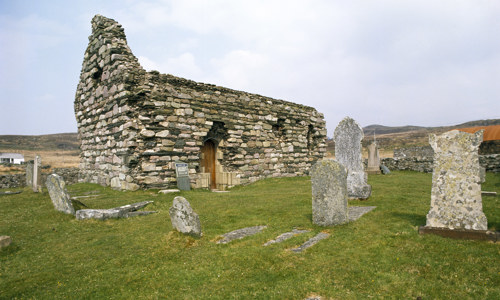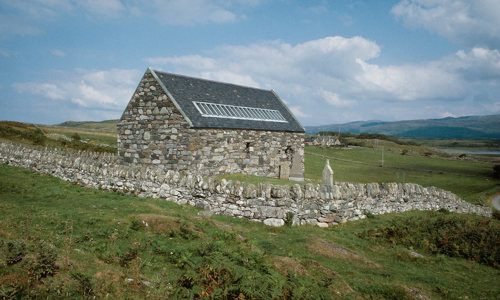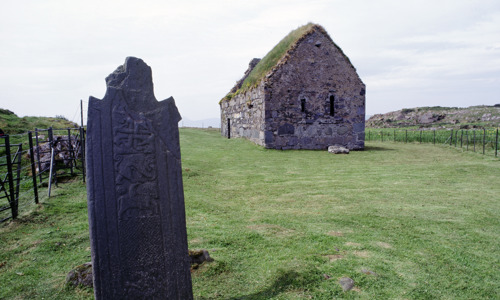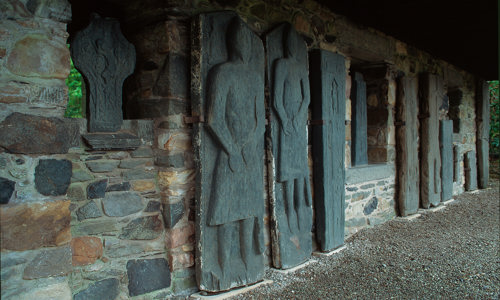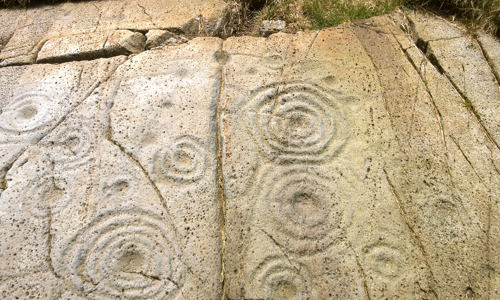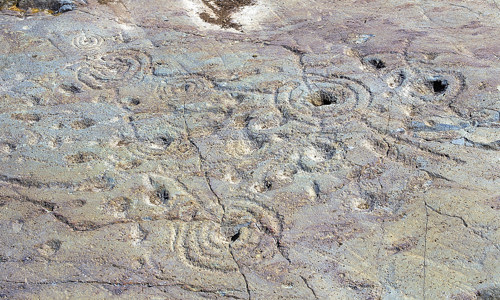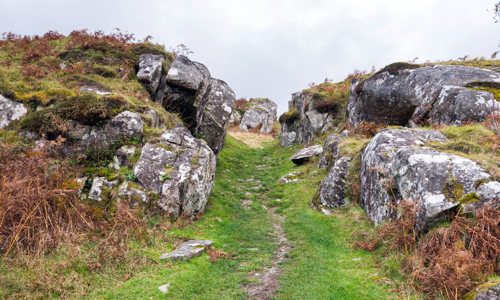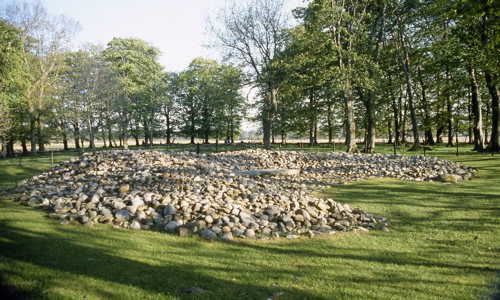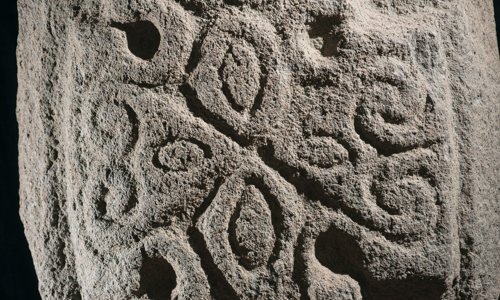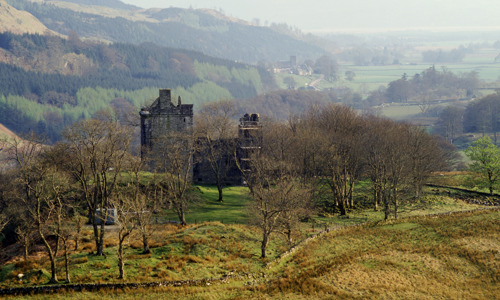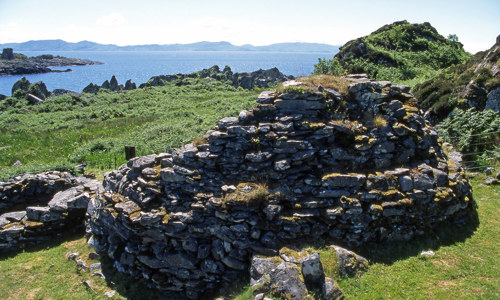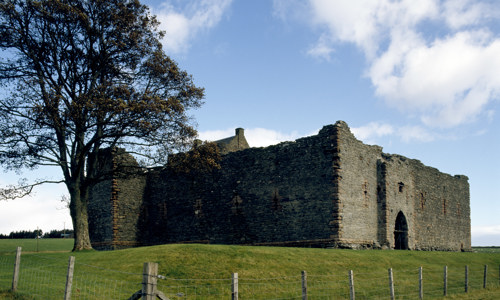History
Scotland’s oldest
Castle Sween is the oldest standing castle on the Scottish mainland that we can date with confidence. It and its adjacent sea loch take their name from Suibhne (Sven) ‘the Red’, a chieftain of Irish descent and ancestor of the MacSweens. He probably built Castle Sween in the 1100s, a time when Argyll lay outside the Kingdom of Scotland.
The castle is set on a low, rocky ridge overlooking Loch Sween. Its curtain wall, 2m thick and 8m high, surrounded a quadrangular courtyard, though the complex was altered and built upon during the next 500 years.
We can tell the castle dates back to the 1100s by the broad buttresses on the outside walls. There is also an absence of windows and other openings, aside from the entrances.
The Lords’ stronghold
In the 1200s, control of Argyll and the Isles was in dispute between the King of Norway and the King of Scots. As part of Scottish efforts to secure control, the MacSweens were replaced as Lords of Knapdale by 1262 by the Stewart Earls of Menteith. But it was not until 1266 that overall lordship of Argyll and the Isles was transferred to the King of Scots by King Magnus of Norway.
In about 1300, an attempt by John MacSween to take back Castle Sween failed – despite ‘a tryst [meeting] of a fleet against Caisteal Suibhne’. A new three-story seaward tower was built about this time.
In the late 1300s, the castle passed to the MacDonald Lords of the Isles, and several families served as keepers. In 1481 James III of Scotland, fearful of the MacDonalds’ treachery, entrusted the castle to the Campbell earls of Argyll. The castle was destroyed by Sir Alexander MacDonald in 1647.
Across the centuries
Castle Sween has been excavated several times, and there’s evidence that the site was occupied before the castle was built. Works in the 1920s revealed:
- a stone axe and whetstone in a cave beneath the castle
- a Neolithic six-knobbed stone ball
- three medieval brooches and implements
- a barbed and tanged arrowhead
Further excavations in the 1980s found evidence for at least five separate periods of use within the courtyard. One notable find was a 1400s harp-peg found on the site, associated with the Lords of the Isles.


